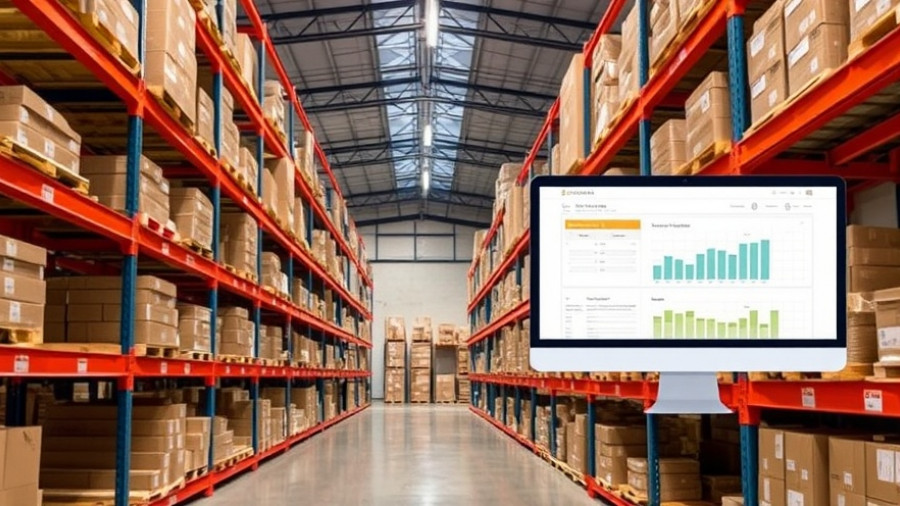
Transforming Customer Engagement: The Power of Branded Tracking Pages
In today's fast-paced e-commerce landscape, delivering a superior customer experience is vital for retaining customers and building brand loyalty. One effective method to achieve this is by implementing branded tracking pages. These custom pages provide personalized tracking experiences for consumers, allowing them to stay informed about their orders without feeling disconnected from the brand they chose.
What Exactly Is a Branded Tracking Page?
A branded tracking page is a unique webpage designed specifically for an e-commerce business that allows customers to track their shipments while remaining on the retailer’s site. Unlike generic tracking pages that provide little beyond the package's arrival status, branded pages incorporate the brand’s logo, colors, and messaging, transforming what could be a mundane experience into an exciting journey. For instance, when a consumer orders a product such as a stylish jacket, instead of receiving a generic link that redirects them elsewhere, they would be taken to a vibrant page brimming with real-time updates and tailored marketing content.
The Importance of a Personalized Tracking Experience
Understanding customer expectations is crucial. Today's consumers are not just looking for a product; they crave a connection with the brands they choose. Studies reveal that customers are more likely to return to brands that offer seamless post-purchase communication and experiences. A branded tracking page effectively meets these expectations by informing customers about their orders in real-time and keeping them connected to the brand's journey.
Key Benefits of Branded Tracking Pages
Branded tracking pages come with several transformative benefits:
1. Boosting Brand Identity
By maintaining consistent branding elements throughout the tracking process, businesses strengthen their identity. This consistency reinforces brand recall, ensuring that customers remember not only the transaction but also the enjoyable journey associated with it. A branded tracking page sends a clear message: the business values its relationship with the customer.
2. Enhancing Customer Engagement
On average, customers engage with tracking pages multiple times, expecting timely updates on their orders. A well-designed branded tracking page can reduce anxiety by clearly displaying the order's status and providing contact information should any questions arise. Integrating features such as chat support can offer immediate assistance for any concerns, further enriching the customer experience.
3. Expanding Marketing Opportunities
Branded tracking pages serve as prime real estate for marketers. The pages can include promotional materials, related product suggestions, or even discounts on future purchases. This not only engages customers but also opens doors for upselling opportunities, ultimately improving conversion rates.
4. Improving Operational Efficiency
With detailed information readily available on tracking pages, customer inquiries about order statuses significantly diminish. This reduction allows customer service teams to focus on more complex issues, enhancing the overall service quality and operational efficiency.
5. Gaining Insights and Feedback
Branded tracking pages can also serve as a valuable tool for collecting customer feedback and data. Analyzing interactions can reveal insights into customer preferences and behaviors, helping businesses tailor their offerings and marketing strategies.
Implementing a Successful Branded Tracking Page
Creating a branded tracking page is simpler than many think. Here are the essential steps to guide businesses through the process:
- Evaluate Needs: Assess current tracking processes and identify possible enhancements.
- Select a Platform: Choose a partner that offers e-commerce solutions, such as Fulfillment Hub USA, RapidShyp, or NimbusPost.
- Design Customization: Ensure the page reflects the brand’s aesthetics through logo incorporation and color choices.
- Integration: Seamlessly integrate the tracking page with existing e-commerce and logistics systems to maintain efficiency.
- Launch and Test: Roll out the page, collect customer feedback, and implement necessary adjustments to optimize the experience.
Looking Ahead: The Evolving E-Commerce Landscape
As e-commerce continues to grow and evolve, so too do customer expectations. Investing in branded tracking pages is not just about enhancing transparency; it’s about creating a cohesive and immersive shopping experience that resonates with consumers. With tools such as AI and robust analytics at their disposal, companies can leverage personalized tracking experiences as a competitive advantage in the saturated e-commerce market.
Final Thoughts and Call to Action
In conclusion, leveraging branded tracking pages can significantly enhance the post-purchase experience. As consumers increasingly desire a connection with brands, these pages offer a powerful way to solidify that relationship. Businesses should consider how easy it can be to integrate branding and personalization into their tracking processes. Finetune your strategy today and turn every order into an engaging touchpoint that strengthens loyalty and encourages repeat purchases.
 Add Row
Add Row  Add
Add 




Write A Comment